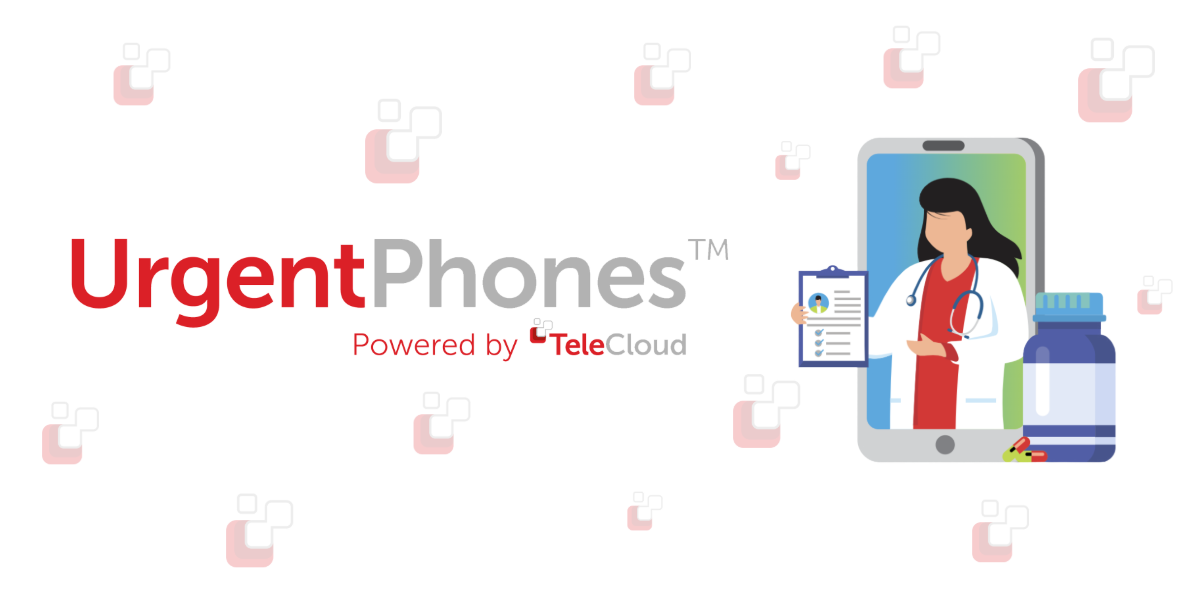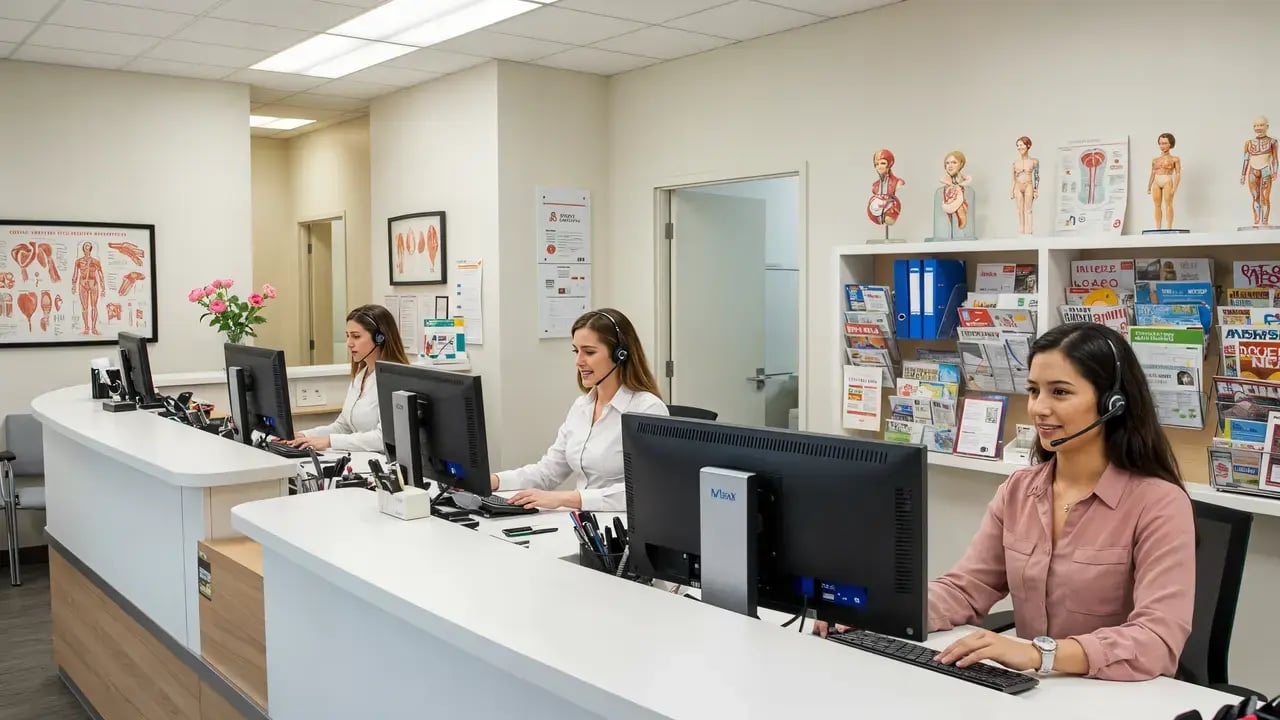What’s the Best Way to Manage Patient Voicemails in a Busy Practice?
June 19th, 2025
4 min read
By Matt Gavin

In busy healthcare environments, voicemail is a critical communication channel for patient engagement, post-visit follow-ups, medication requests, and scheduling—but it’s also a common source of frustration. Calls pour in after hours, during lunch breaks, or when front-desk staff are assisting other patients. The result? Voicemails pile up and go unchecked for hours, or worse, days.
This isn't just a minor inconvenience. Every missed voicemail is a potential missed appointment, a delay in care, or a frustrated patient left in the dark. In a world where customer experience is everything, especially in healthcare, voicemail mismanagement can erode trust and reduce retention.
At TeleCloud, we’ve worked with countless medical practices to streamline communications and transform voicemail into a tool for better patient care. Our experience helping healthcare teams modernize their phone systems gives us unique insight into what works—and what doesn’t.
In this guide, we’ll show you how modern voicemail management systems can eliminate chaos, improve team accountability, and dramatically enhance the patient experience. You’ll discover how smarter tools create faster response times, fewer no-shows, and stronger patient trust.
Tired of voicemails slipping through the cracks? Schedule a free voicemail workflow audit today.
What Do Modern Practices Expect from Voicemail Management?
Healthcare leaders today expect more than just a basic voice mailbox. They want smart, intuitive tools that allow for:
- Instant visibility: Who called, when, and why?
- Shared responsibility: So no single staff member is burdened or becomes a bottleneck.
- Trackable follow-ups: Ensuring no patient is forgotten.
- Escalation capabilities: For urgent issues or overdue responses.
The expectation is clear: Voicemail must evolve from a black hole into a managed, trackable part of the communication ecosystem.
What Are the Must-Have Features of Smart Voicemail Systems?
To ensure that no message goes unanswered and every patient receives timely care, top-performing healthcare practices are replacing outdated voicemail systems with intelligent voicemail solutions that include:
1. Visual Voicemail Dashboards
No more calling into a mailbox and jotting down notes. With visual dashboards, staff can see all voicemail messages in one interface, complete with caller ID, timestamps, and transcription (if enabled). Transcription helps staff quickly triage and prioritize messages, reducing miscommunication and ensuring no important detail is missed. This boosts transparency and speeds up response times.
2. Shared Voicemail Inboxes by Department
Incoming messages can be routed by department (Appointments, Billing, Refills), ensuring the right team receives and acts on them. Multiple team members can access the same inbox, eliminating single points of failure.
3. Automated Escalation and SLA Alerts
If a message goes unreturned for a set time—say 60 minutes—the system automatically alerts a supervisor or escalates the task. This ensures accountability and timely patient responses.
4. Real-Time SMS and Email Notifications
Voicemails can trigger SMS or email alerts across channels so staff can stay responsive even when they're off-site or multitasking. No more delays waiting until someone checks the phone manually.
For example, a nurse receiving a critical medication refill request while at lunch can be notified instantly and act on it without delay. No more waiting until someone manually checks the voicemail box—patients receive timely callbacks and care decisions happen faster.**
How Does This Technology Improve the Patient Experience?
Your patients don’t just want to be heard—they want to be acknowledged and helped, fast. Smart voicemail systems deliver:
- Faster callbacks
- More confident, less overwhelmed staff
- Fewer missed messages
- Improved trust and fewer no-shows
Consider this example: A patient leaves a voicemail requesting a same-day prescription refill. With traditional systems, that message may sit unattended for hours, potentially delaying treatment. With TeleCloud, the message routes to the appropriate team, alerts are triggered, and a staff member responds within minutes—transforming frustration into satisfaction.
This isn’t just about internal efficiency. It’s about showing your patients that they matter and that their care doesn’t stop when the phone rings.
How Can You Implement Smart Voicemail with TeleCloud?
At TeleCloud, we guide you step-by-step to modernize your voicemail system without disrupting your practice. We take a consultative approach to evaluate your current system and tailor a voicemail solution that fits your workflow. Here’s how we do it:
Step 1: Audit Your Current Call Flow
We analyze where voicemail is currently falling short and map your inbound call process. We also assess potential integration points with your existing EHR or scheduling software to minimize disruption.
Step 2: Set Up Shared Department Mailboxes
We create inboxes for Appointments, Billing, and other key areas so messages land in the right hands immediately. Our team ensures these are structured for clarity and ease of access across your teams.
Step 3: Configure Escalation Rules and SLAs
We build in rules that alert supervisors if a message isn’t returned in a timely manner. You’ll define your SLA expectations, and we’ll configure the system to match—automating accountability.
Step 4: Train Your Staff
Your team learns how to use the visual dashboard, set priorities, and respond efficiently. We offer recorded sessions and live support to ensure full adoption, even for non-technical users.
Step 5: Enable SMS and Email Alerts
Stay connected and responsive, even when you’re on the move. We’ll help configure these alerts to align with your team's availability and roles.
Practices that have implemented our solution often see a 35–50% improvement in response time and significant reductions in patient complaints related to communication lapses.
What Happens When You Take Control of Voicemail?
Voicemail shouldn’t be a dead end. With the right tools in place, it becomes a powerful channel to support timely care, enhance patient trust, and reduce administrative stress. Instead of falling behind on patient follow-ups, your staff gains the ability to manage and respond to messages efficiently and confidently.
Features like visual dashboards, departmental inboxes, escalation protocols, and real-time alerts equip your team to stay on top of every message, no matter how busy the day gets. That means fewer no-shows, more completed appointments, and stronger relationships with your patients.
By taking control of voicemail, you create a smoother, smarter experience—for your team and for every patient who calls in.
Don’t let outdated systems hold you back.
Topics:














